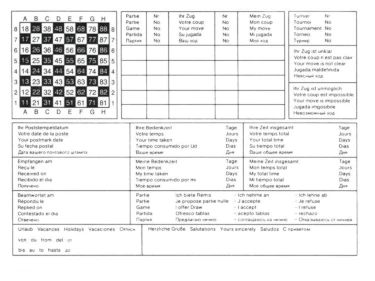
The two types of chess notation are descriptive notation and algebraic notation. Both systems are used to record the moves made in a chess game, but they differ in the way they describe the move of each piece.
Descriptive notation
Descriptive notation, also known as English notation, was the first system of recording chess moves. It was used from the 16th century until the late 19th century, when algebraic notation gradually replaced it as the standard notation system. In descriptive notation, each square on the chessboard is named after its location, such as “Queen’s Rook” or “King’s Bishop.” The move of a piece is described by the name of the piece and the square it moves to, such as “Queen’s Rook to Queen’s Bishop 8.”
Algebraic notation
Algebraic notation, on the other hand, uses a letter and number system to describe the move of each piece. Each column on the chessboard is assigned a letter, and each row is assigned a number. The move of a piece is described by the letter and number of the starting square, followed by the letter and number of the ending square. For example, the move “e4” means the pawn on the “e” column moves to the fourth row.
Algebraic notation is the standard notation system used in most chess tournaments and is preferred by many chess players because it is more concise and easier to read. It also allows for the use of symbols and annotations to describe other aspects of the game, such as check, checkmate, and capture.
In conclusion, both descriptive notation and algebraic notation serve the purpose of recording chess moves, but algebraic notation is now the standard notation system and is widely used by chess players and organizations. Understanding both notation systems is important for chess players, as it allows them to read and study chess games from different eras and regions.